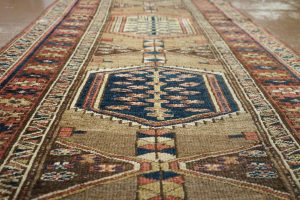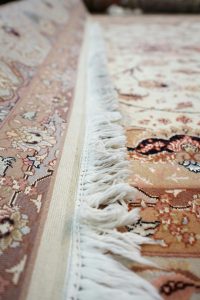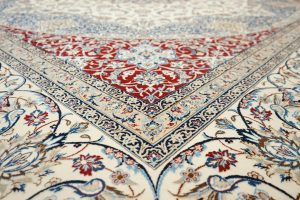Best Quality Carpet: What to Look For and How to Choose the Right One
 When it comes to flooring, few options add warmth, comfort, and style to a space like carpet. But with so many types, textures, and materials available, finding the best quality carpet can feel overwhelming. Whether you’re furnishing a new home, upgrading a single room, or planning a full remodel, understanding what makes a carpet high-quality will help you make a smart, long-lasting investment.
When it comes to flooring, few options add warmth, comfort, and style to a space like carpet. But with so many types, textures, and materials available, finding the best quality carpet can feel overwhelming. Whether you’re furnishing a new home, upgrading a single room, or planning a full remodel, understanding what makes a carpet high-quality will help you make a smart, long-lasting investment.
What Defines Carpet Quality?
Not all carpets are created equal. The best quality carpet is defined by a combination of factors that contribute to its durability, appearance, comfort, and maintenance. Here are the key elements to consider.
Boro Rug & Carpet Warehouse provides a wide selection of carpets that meet these quality standards—helping customers find options that balance performance, aesthetics, and affordability.
 1. Fiber Material
1. Fiber Material
The fiber is the foundation of your carpet’s performance. High-quality carpets are typically made from one of the following materials:
Nylon: Known for its strength and resilience, nylon is considered one of the best materials for high-traffic areas. It resists wear, abrasion, and stains (especially when treated).
Triexta (SmartStrand): A newer fiber that’s eco-friendly, extremely stain-resistant, and soft underfoot. It combines performance with sustainability.
Wool: A premium natural fiber, wool offers unmatched softness and a luxurious feel. It’s eco-friendly, naturally stain-resistant, and long-lasting when properly maintained.
Polyester: Offers rich color and softness but is best suited for low-traffic areas due to its lower resilience compared to nylon.
2. Carpet Density and Pile Weight
Density refers to how tightly the fibers are packed together. A denser carpet means better performance and longer life.
Pile weight is the weight of the fiber per square yard. Heavier weight generally means a thicker and more durable carpet.
Look for a carpet with a higher density rating and appropriate pile weight for your space. For example, high-traffic areas like hallways and living rooms need more durable carpets than a bedroom or guest room.
3. Twist Level (for Cut Pile Carpets)
The twist of the carpet fiber indicates how many times the strands are twisted together. A higher twist count usually results in better durability and helps the carpet resist crushing and matting.
4. Carpet Construction Type
The way a carpet is constructed affects its durability and appearance:
Cut Pile: Features sheared fibers that stand upright. Variations like plush, saxony, and frieze fall into this category.
Loop Pile: Fibers remain uncut, making this type very durable (e.g., Berber carpet).
Cut and Loop Pile: Combines both styles for texture and pattern. Offers a high-end look while maintaining performance.
5. Stain and Soil Resistance
Look for carpets with built-in stain protection or special treatments that repel dirt and spills. Quality carpets often come with stain warranties that reflect the product’s resilience.
6. Backing and Padding
The carpet backing holds the fibers in place and contributes to the carpet’s longevity. A high-quality secondary backing improves dimensional stability. Underneath, carpet padding enhances comfort, helps reduce wear, and provides insulation. Don’t overlook this layer—using a good pad is essential even with the best carpet.
7. Warranty and Certification
High-end carpets typically come with comprehensive warranties that cover wear, stains, and texture retention. Some may also be certified by organizations like the CRI (Carpet and Rug Institute), which ensures products meet specific performance standards, including indoor air quality and durability.
Where to Use the Best Quality Carpet
Choosing the best quality carpet depends on where you plan to install it. Here are some suggestions:
Living Room: Go for dense, stain-resistant carpets like nylon or triexta with a medium to high pile.
Bedrooms: Softer, plush materials like polyester or wool offer a cozy feel underfoot.
Stairs and Hallways: Use low-pile, high-density carpets with a tight weave for durability and safety.
Basements: Consider synthetic fibers with moisture resistance and mold protection.
Tips for Buying the Best Quality Carpet
Always check the specifications, not just the look or feel.
Ask about pile height, fiber type, twist level, and density rating.
Test a sample at home under different lighting conditions.
Factor in installation and padding costs—they make a big difference.
Consider lifestyle needs: pets, children, allergies, and foot traffic should influence your choice.
Final Thoughts
 Investing in the best quality carpet means more than just selecting the softest or most attractive option. It involves understanding materials, construction, performance, and how all these elements work together to meet your specific needs. A well-chosen carpet enhances not just the appearance of your space, but its comfort and value for years to come.
Investing in the best quality carpet means more than just selecting the softest or most attractive option. It involves understanding materials, construction, performance, and how all these elements work together to meet your specific needs. A well-chosen carpet enhances not just the appearance of your space, but its comfort and value for years to come.
Whether you prioritize durability, luxury, or eco-friendliness, there’s a high-quality carpet that fits your vision—and knowing what to look for puts you one step closer to finding it.
